Kakadu National Park, situated in the Northern Territory of Australia, is home to a diverse range of bird species. With an area of over 19,000 square kilometers, the park’s landscape varies from wetlands, rivers, forests, and savannah woodlands, providing habitat for an estimated 300 species of birds.
The birds in Kakadu are not only a significant part of the park’s unique ecosystem but are essential for the park’s cultural heritage.
The local Indigenous people, the Bininj Mungguy, hold strong cultural ties to birds and use their knowledge for many purposes, including bush medicine and hunting.
In this context, understanding the birdlife of Kakadu is essential to appreciate the significance of these species to the environment and human culture.
1. Rainbow Bee-Eater
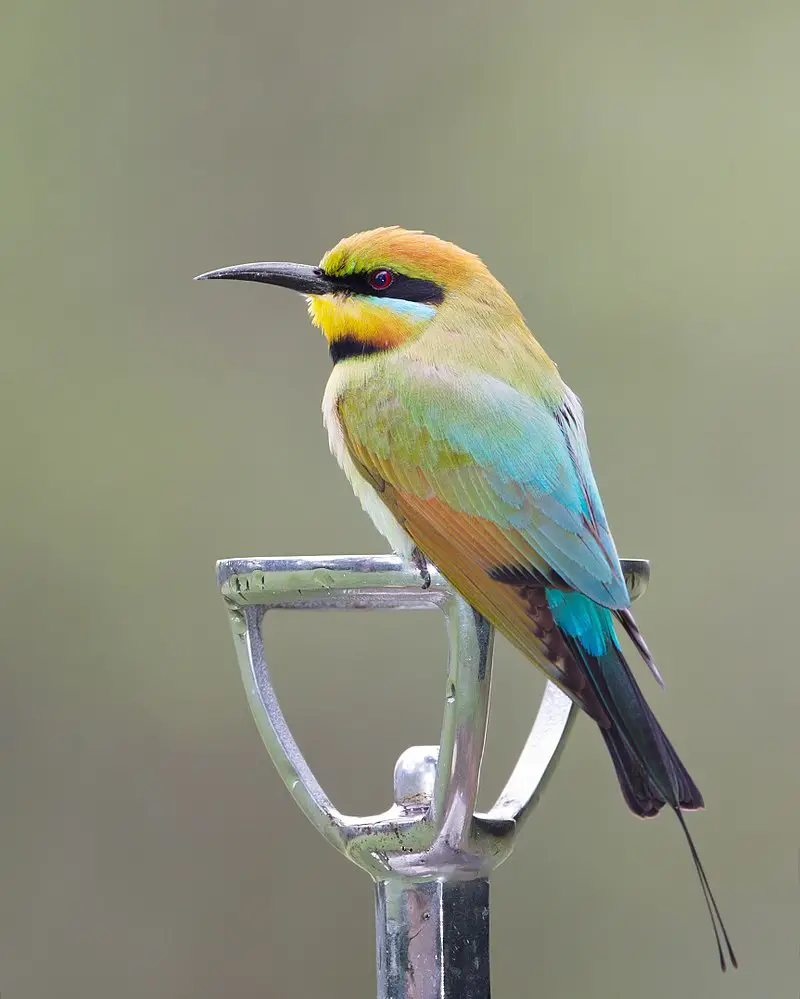
The Rainbow bee-eater (Merops ornatus) is a delightful near passerine bird belonging to the bee-eater family Meropidae.
It is found exclusively in Australia, making it one of only two species of its kind throughout the world; its closest relative being located in Southern and Eastern Africa – the olive bee-eater (Merops superciliosus).
Its stunning plumage features a unique palette of colours including shades pinkish reds, blues, greens and yellows which make for an impressive display when seen up close.
Due to their diet consisting mainly on bees and other insects they have adapted specialised beaks with serrated edges that allow them to easily capture their prey mid flight.
A truly remarkable sight indeed.Scientific classification:
| Kingdom | Animalia |
| Phylum | Chordata |
| Class | Aves |
| Order | Coraciiformes |
| Family | Meropidae |
| Genus | Merops |
| Species | M. ornatus |
Also Featured In: Most common birds in Australia, Birds that Live around Brisbane
2. Banded Fruit Dove
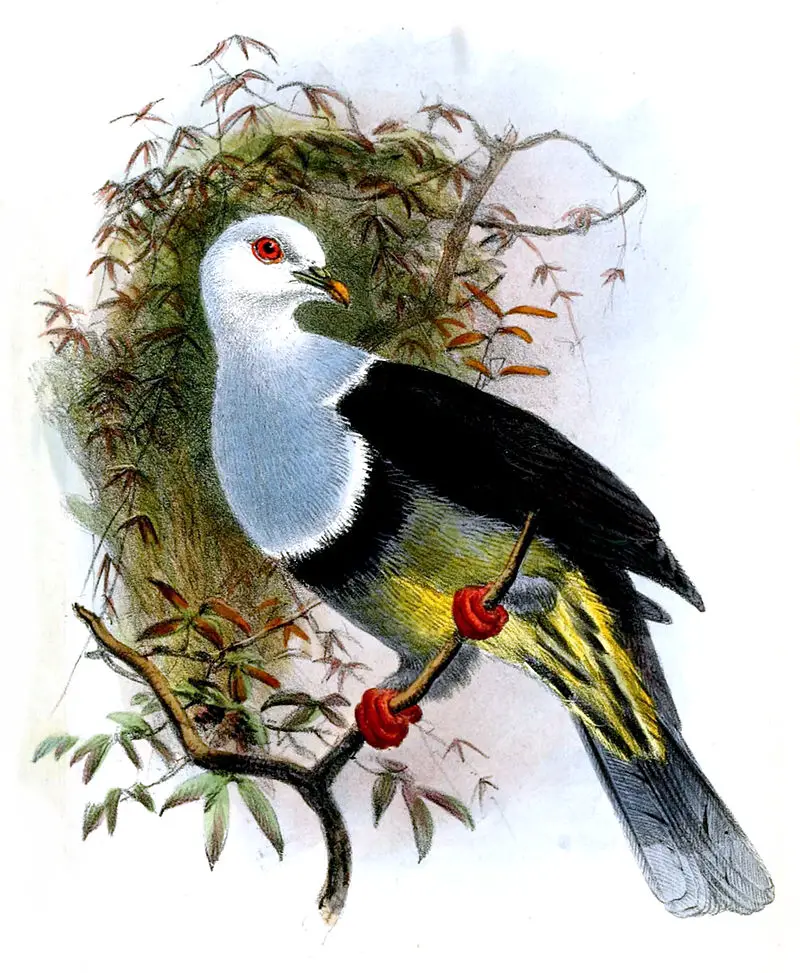
The Banded Fruit Dove is a stunning bird native to the Bali and Lesser Sunda Islands. It has an impressive wingspan of 38-44 cm, with a weight ranging from 450-570 g.
Its head, neck and upper breast are white while its back and upperwing have black colouring which gradually fades into grey on its rump.
The tail is all black but features a broad grey terminal band for contrast, whilst the underparts are also grey in colouration.
This species inhabits monsoonal forests where it can be seen searching for fruit amongst the foliage or perched high up in trees singing their beautiful song during mating season.
They may appear quite solitary however they usually live together as pairs or small groups depending on availability of food sources such as figs and other fruits found within their natural habitat range.Scientific classification:
| Kingdom | Animalia |
| Phylum | Chordata |
| Class | Aves |
| Order | Columbiformes |
| Family | Columbidae |
| Genus | Ptilinopus |
| Species | P. cinctus |
Also Featured In: Timor-Leste birds, Birds that Commonly Found in Bali
3. Azure Kingfisher
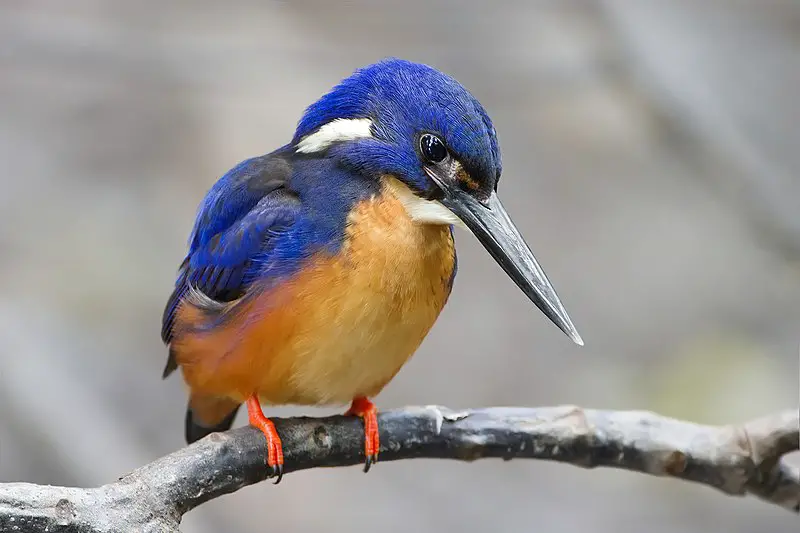
The Azure Kingfisher is a small and beautiful bird, easily recognized by its deep blue to azure back. It measures 17–19 cm in length with males weighing 29-32g and females 31-35g.
On the side of its neck there are large white to buff spots which further adds to the beauty of this species.
This kingfisher inhabits freshwater streams and rivers throughout Australia as well as New Guinea where it can be seen perching on branches next to water bodies or diving for food such as fish, frogs, aquatic insects, molluscs etc.
The Azure Kingfisher has an important role in maintaining healthy river ecosystems while also providing enjoyment when observed in their natural habitats.Scientific classification:
| Kingdom | Animalia |
| Phylum | Chordata |
| Class | Aves |
| Order | Coraciiformes |
| Family | Alcedinidae |
| Subfamily | Alcedininae |
| Genus | Ceyx |
| Species | C. azureus |
Also Featured In: Kingfishers Species, Birds that Charles Darwin Studied
4. Little Kingfisher
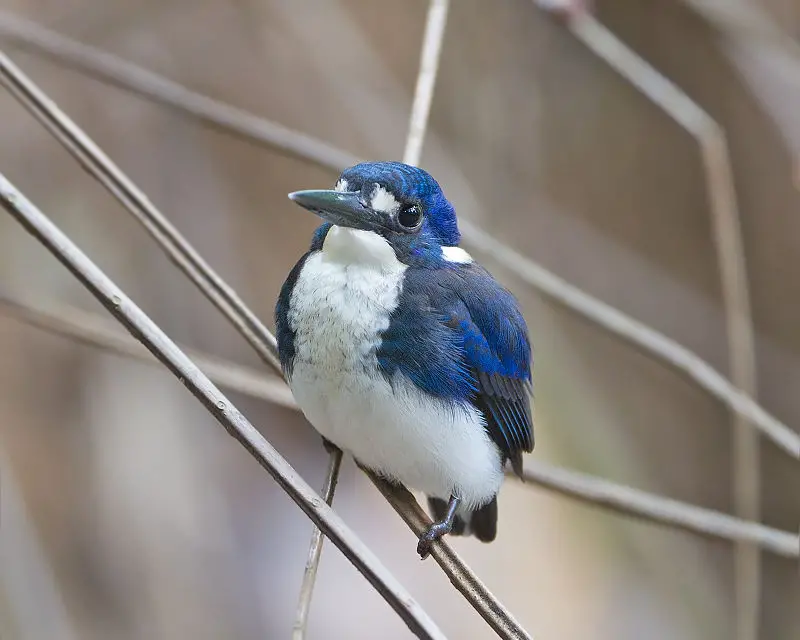
The Little Kingfisher is a small and vibrant species of kingfishers found in the subfamily Alcedininae.
It has an exquisite coloration, with its upperparts being mainly blue or greenish-blue while its head and underparts are bright orange to red.
Its bill is long, thin, and black. This beautiful bird inhabits tropical moist lowland forests near bodies of water such as rivers and streams where they can hunt for fish at night using their sharp vision. They also feed on aquatic insects like dragonflies during the day.
The name Ceyx derives from Greek mythology – which refers to a seabird that was drowned by Zeus himself. A fascinating animal indeed.Scientific classification:
| Kingdom | Animalia |
| Phylum | Chordata |
| Class | Aves |
| Order | Coraciiformes |
| Family | Alcedinidae |
| Subfamily | Alcedininae |
| Genus | Ceyx |
| Species | C. pusillus |
Also Featured In: Common Townsville Birds, Native Birds Of Mackay
5. Australasian Darter
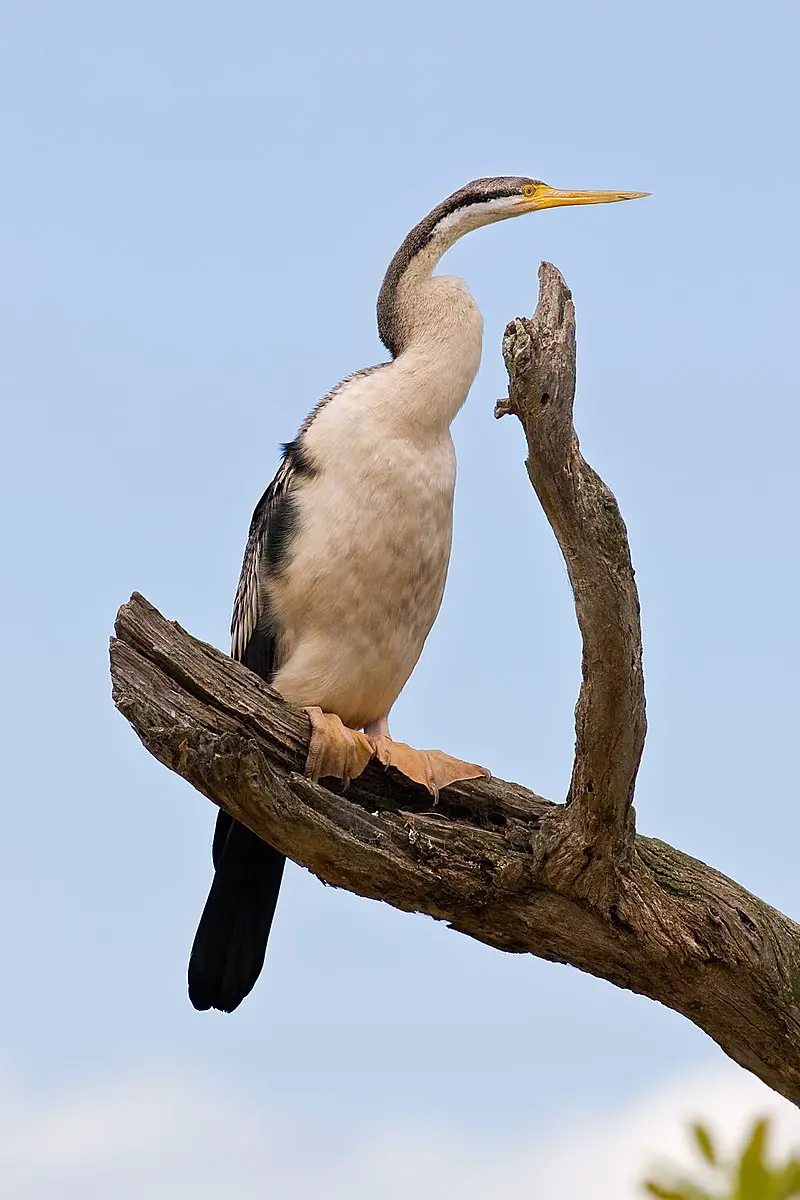
The Australasian Darter, also known as the Australian Darter, is a species of bird in the darter family. It can be found across Australia, Indonesia and Papua New Guinea.
This large bird has an impressive wingspan between 86-94 cm and weighs up to 2.6 kgs.
First discovered by John Gould in 1847, this long necked creature loves to swim and hunt for food underwater before drying its feathers on tree branches or rocks afterwards – like other Anhingidae species do.
They mainly feed on fish but will eat crustaceans too if they are around. With beautiful black plumage with white markings on their wings and tail these birds stand out from most others due to their unique style when it comes to fishing.Scientific classification:
| Kingdom | Animalia |
| Phylum | Chordata |
| Class | Aves |
| Order | Suliformes |
| Family | Anhingidae |
| Genus | Anhinga |
| Species | A. novaehollandiae |
Also Featured In: Cormorant Species, Queensland Birds You Should Know
6. Black-Necked Stork
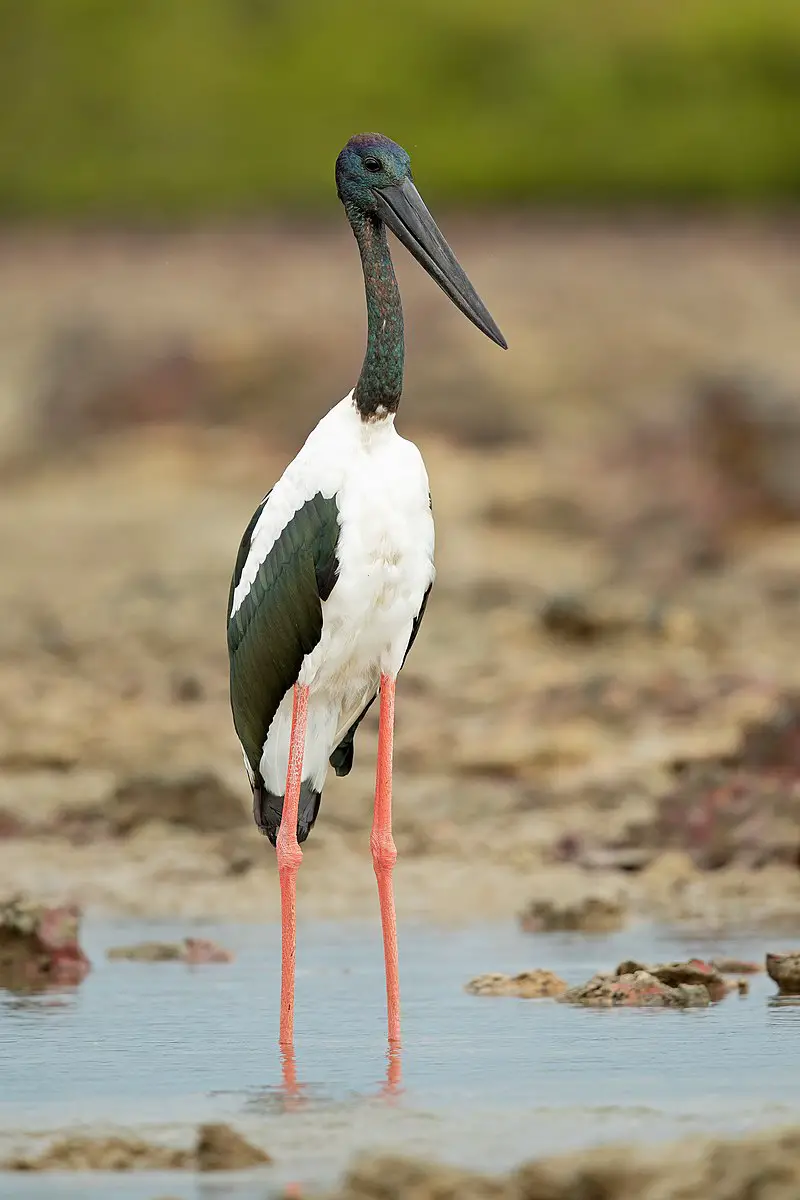
The black-necked stork is a magnificent wading bird in the stork family. With its long neck, striking colours and impressive size, this species is easily recognized across much of India and Southeast Asia as well as Australia.
This adaptable bird can be found in wetlands such as marshes, lagoons and rivers but also frequents nearby crop fields where it feeds on a variety of animal prey including amphibians, fish and small reptiles.
Both sexes have an imposing bill which they use to catch food or perform intricate courtship rituals during breeding season that involve bowing their heads low then jerking them back up again several times.
Their feathers are predominantly dark grey with white patches under the wings while the head has glossy greenish-black plumage; making for stunningly beautiful creatures indeed.Scientific classification:
| Kingdom | Animalia |
| Phylum | Chordata |
| Class | Aves |
| Order | Ciconiiformes |
| Family | Ciconiidae |
| Genus | Ephippiorhynchus |
| Species | E. asiaticus |
Also Featured In: Stork Species, Common Birds of Jharkhand
7. Red Goshawk
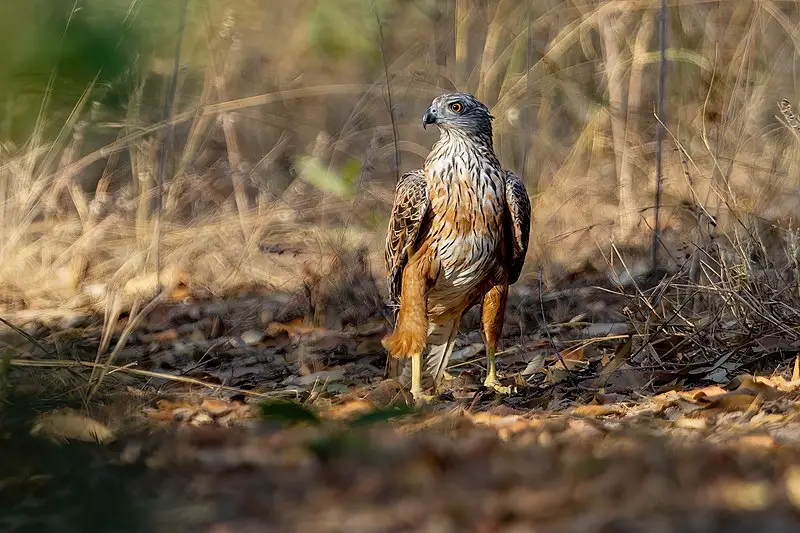
Red goshawk is a rare bird of prey found mainly in the savanna woodlands of northern Australia. This species is known to inhabit areas near watercourses.
It feeds on a variety of live prey, primarily birds. The red goshawk was initially identified by John Latham, an English ornithologist, in 1801, using the binomial name Falco radiatus.
The red goshawk is one of the rarest birds in Australia, making it an elusive and seldom seen species. It has a striking red plumage that distinguishes it from other birds of prey.
This bird is a powerful hunter and an agile flier, capable of adapting to changing environments.
The red goshawk is an essential part of the Australian ecosystem, and its conservation is critical to maintaining the ecological balance of the area.Scientific classification:
| Kingdom | Animalia |
| Phylum | Chordata |
| Class | Aves |
| Order | Accipitriformes |
| Family | Accipitridae |
| Genus | Erythrotriorchis |
| Species | E. radiatus |
8. Sandstone Shrikethrush
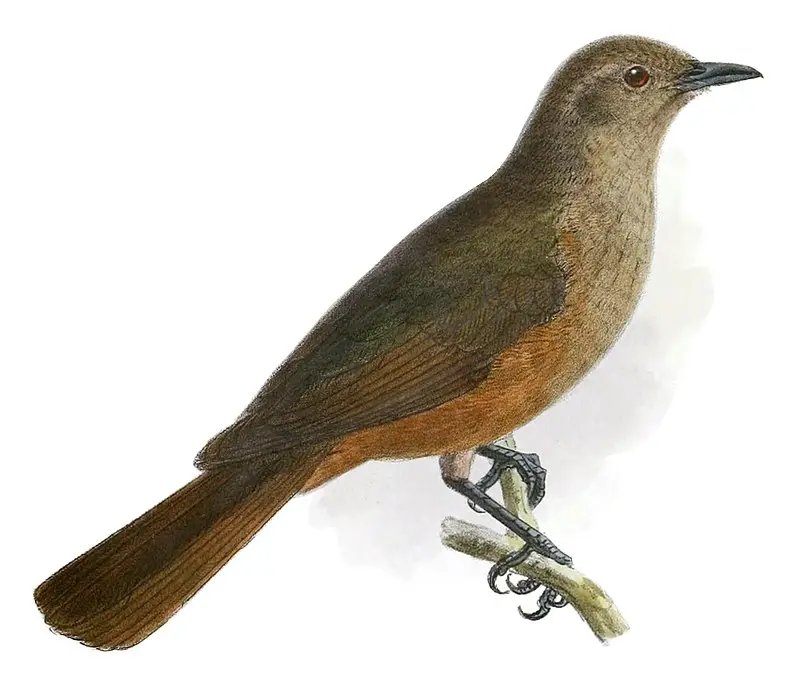
The sandstone shrikethrush bird is a unique member of the Pachycephalidae family, found only in Australia. This species is also known as the brown-breasted shrike-thrush and sandstone thrush.
Its most notable feature is its beautiful brown chest feathers. This bird is usually found in sandstone habitats, which is where it gets its name.
The sandstone shrikethrush is known for its beautiful singing voice, which can be heard at dawn and dusk.
These birds mainly feed on insects and small reptiles. They are solitary birds and are not usually found in large groups.
The sandstone shrikethrush bird is an important part of Australia’s native birdlife and is admired for its beauty and unique features.Scientific classification:
| Kingdom | Animalia |
| Phylum | Chordata |
| Class | Aves |
| Order | Passeriformes |
| Family | Pachycephalidae |
| Genus | Colluricincla |
| Species | C. woodwardi |
9. White-Throated Grasswren
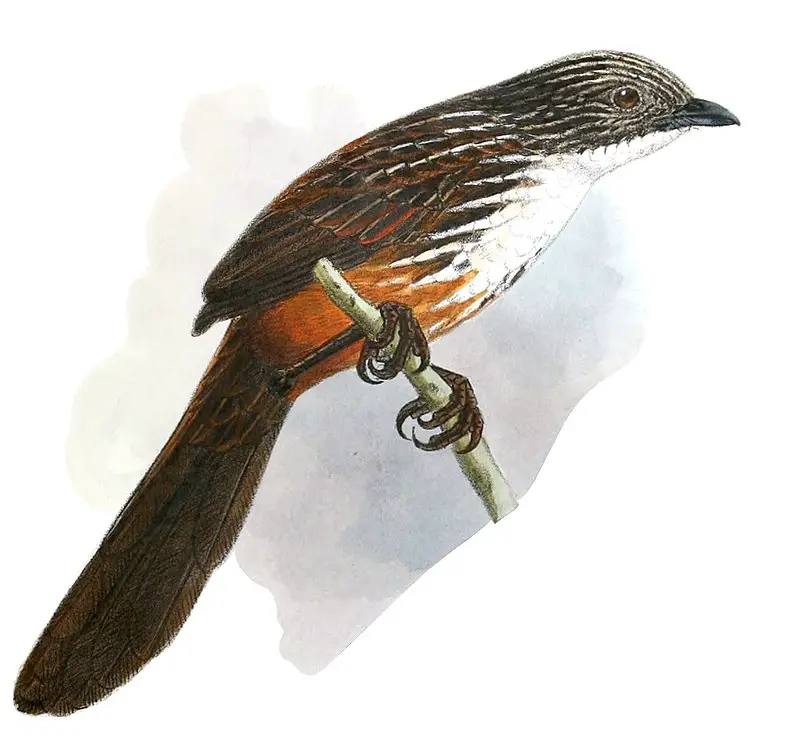
The White-throated grasswren, also known as Yirlinkirrkirr, is a bird species found only in northern Australia, specifically in West Arnhem Land, Northern Territory.
It belongs to the family Maluridae. This bird species can be found on and around the Arnhem Land sandstone massif, between Katherine and Maningrida. It covers an area of Australia that isn’t very wide.
The White-throated grasswren is endemic, meaning it is unique to this region and cannot be found anywhere else in the world.Scientific classification:
| Kingdom | Animalia |
| Phylum | Chordata |
| Class | Aves |
| Order | Passeriformes |
| Family | Maluridae |
| Genus | Amytornis |
| Species | A. woodwardi |
10. Rainbow Pitta
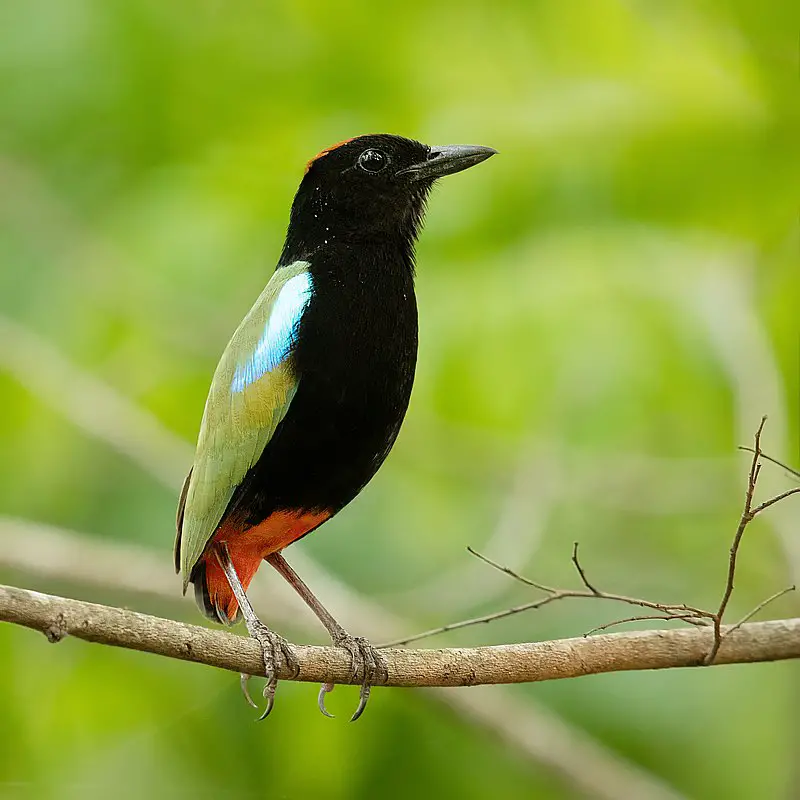
The Rainbow pitta bird is a small passerine found only in northern Australia. With a velvety black head and chestnut stripes above the eyes, it has olive green upper parts and black underparts.
The bird’s bright red belly and olive green tail make it a beautiful sight to see. Found in monsoon forests and some dry areas, this Australian endemic is closely related to the superb pitta of Manus Island.Scientific classification:
| Kingdom | Animalia |
| Phylum | Chordata |
| Class | Aves |
| Order | Passeriformes |
| Family | Pittidae |
| Genus | Pitta |
| Species | P. iris |
11. White-Lined Honeyeater
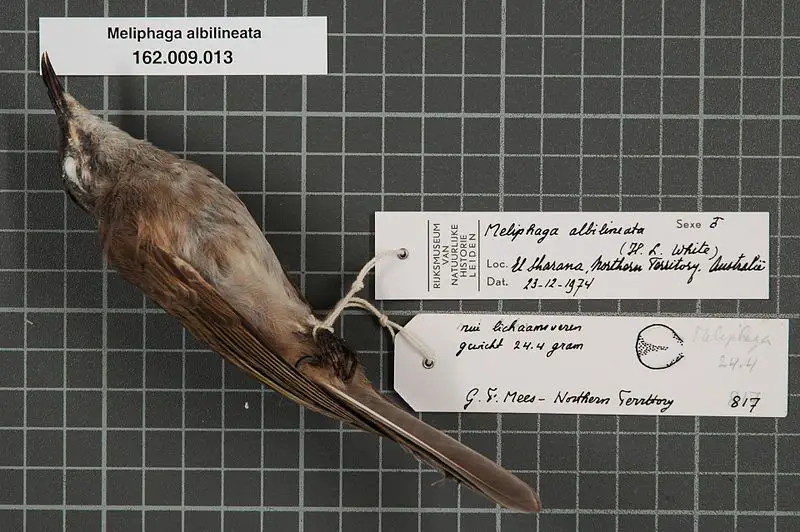
The White-lined Honeyeater is a bird species belonging to the family Meliphagidae. It is found exclusively in northern Australia and prefers subtropical or tropical moist lowland forests.
This species was once considered to include the Kimberley honeyeater as a subspecies. The White-lined Honeyeater is distinguished by its white eye stripe and black feathers on its throat and wings.
It is an active species, often seen flitting through the trees and shrubs in search of its preferred diet of nectar, pollen, and insects.
Despite being a common bird species in its range, habitat loss and degradation pose a threat to the White-lined Honeyeater’s long-term survival.
However, conservation efforts focused on preserving the bird’s natural habitat can help mitigate this threat.Scientific classification:
| Kingdom | Animalia |
| Phylum | Chordata |
| Class | Aves |
| Order | Passeriformes |
| Family | Meliphagidae |
| Genus | Territornis |
| Species | T. albilineata |
12. Great Bowerbird
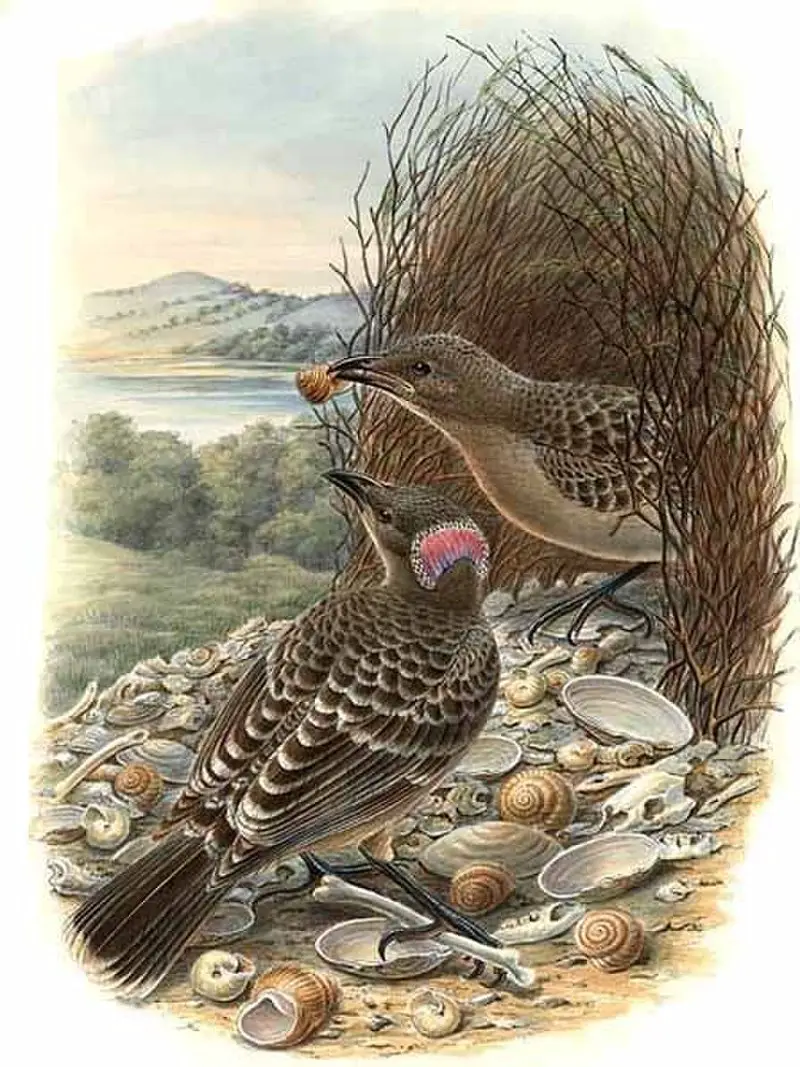
The Great bowerbird is one of the resident birds in northern Australia, known for its striking appearance and sculptural skills.
This bird is quite common in a broad range of forest and woodland habitats, including vine, monsoon, and mangrove swamps.
Like other bowerbirds, their breeding considerations are crucial, and they build bowers that are decorated with an assortment of colorful objects.
Males put up bowers and perform courtship displays, trying to attract females for mating.
These bowers can be up to a meter tall and have a unique artistic look, as the birds use feathers, flowers, stones, leaves, and shells to create unique and intricate designs.
The species also exhibits a unique vocalisation during breeding season as males use sounds to attract females.
In summary, the Great bowerbird is a fascinating bird with its unique sculptural skills, vibrant appearance, and impressive courtship displays.Scientific classification:
| Kingdom | Animalia |
| Phylum | Chordata |
| Class | Aves |
| Order | Passeriformes |
| Family | Ptilonorhynchidae |
| Genus | Chlamydera |
| Species | C. nuchalis |
13. Masked Finch
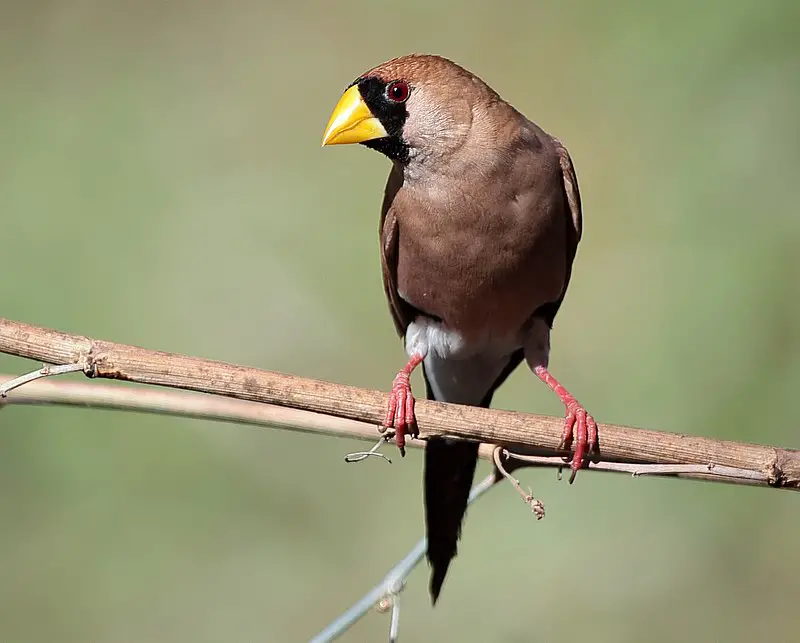
The masked finch is a small bird found in dry savannah areas of northern Australia. They are commonly seen near water sources, such as rivers or wetlands.
With a length of 12.5-13.5 cm, the male is slightly larger than the female. As the name suggests, the bird has a distinctive black mask around its eyes, which helps in identifying them.
They belong to the family Estrildidae which is known for their colorful plumage and unique songs.
The masked finch feeds on seeds and insects and can often be seen in small flocks, hopping around on the ground while searching for food.
They are a common resident of their habitat and are an important part of the ecosystem.Scientific classification:
| Kingdom | Animalia |
| Phylum | Chordata |
| Class | Aves |
| Order | Passeriformes |
| Family | Estrildidae |
| Genus | Poephila |
| Species | P. personata |
14. Plumed Whistling Duck
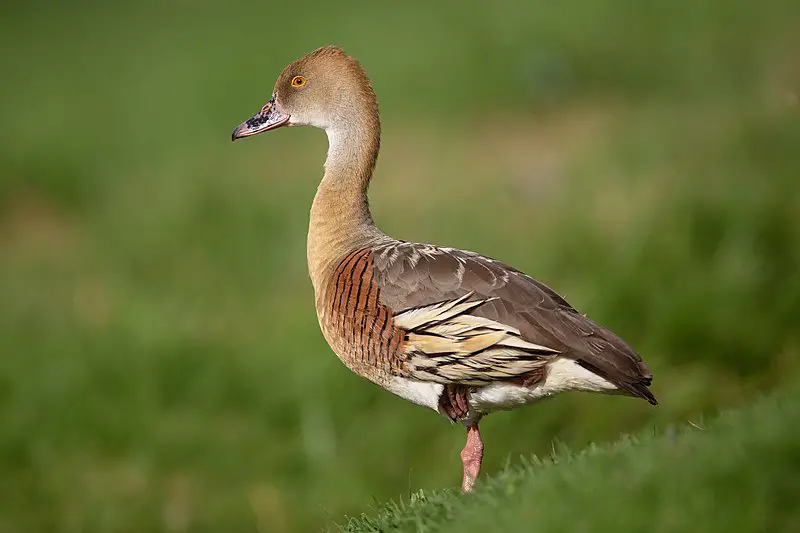
The Plumed whistling duck, also known as the Grass whistling duck, is a species of whistling duck that is native to Australia.
This bird has a long neck and characteristic plumes that arise from its flanks, making it stand out from other duck species.
It is primarily brown in coloration and both males and females look alike. The Plumed whistling duck was first described by Thomas Campbell Eyton, an English naturalist, in 1838, and its specific epithet is named after him.
This bird is often found in wetlands and feeds on a diet of grasses and insects.
It has a unique whistling call, which can be heard from a distance. The Plumed whistling duck is an important species in Australia’s ecosystem, and conservation efforts are in place to protect its habitat and population.Scientific classification:
| Kingdom | Animalia |
| Phylum | Chordata |
| Class | Aves |
| Order | Anseriformes |
| Family | Anatidae |
| Genus | Dendrocygna |
| Species | D. eytoni |
Also Featured In: Birds that Live in Gold Coasts,